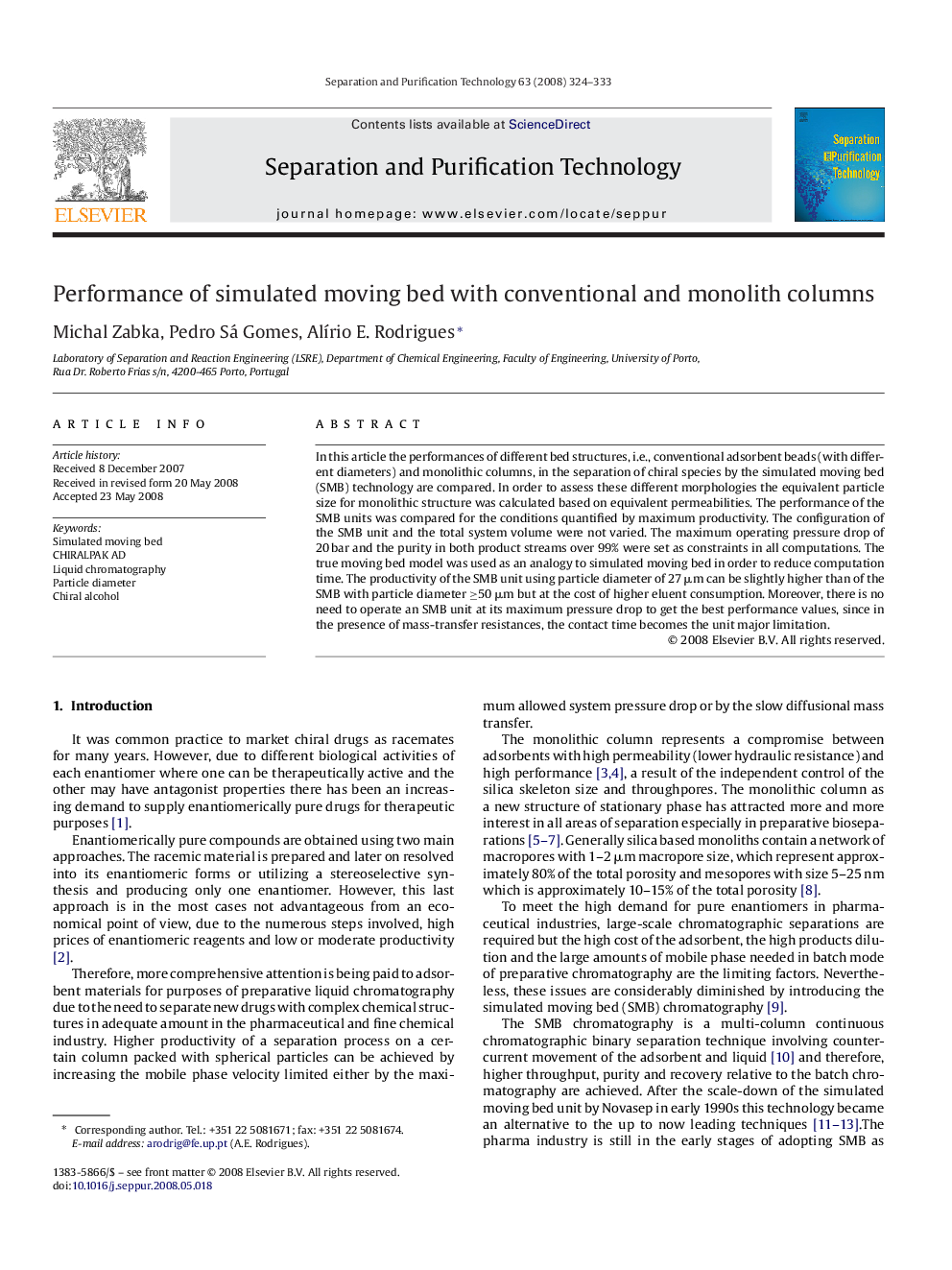| Article ID | Journal | Published Year | Pages | File Type |
|---|---|---|---|---|
| 643513 | Separation and Purification Technology | 2008 | 10 Pages |
In this article the performances of different bed structures, i.e., conventional adsorbent beads (with different diameters) and monolithic columns, in the separation of chiral species by the simulated moving bed (SMB) technology are compared. In order to assess these different morphologies the equivalent particle size for monolithic structure was calculated based on equivalent permeabilities. The performance of the SMB units was compared for the conditions quantified by maximum productivity. The configuration of the SMB unit and the total system volume were not varied. The maximum operating pressure drop of 20 bar and the purity in both product streams over 99% were set as constraints in all computations. The true moving bed model was used as an analogy to simulated moving bed in order to reduce computation time. The productivity of the SMB unit using particle diameter of 27 μm can be slightly higher than of the SMB with particle diameter ≥50 μm but at the cost of higher eluent consumption. Moreover, there is no need to operate an SMB unit at its maximum pressure drop to get the best performance values, since in the presence of mass-transfer resistances, the contact time becomes the unit major limitation.
